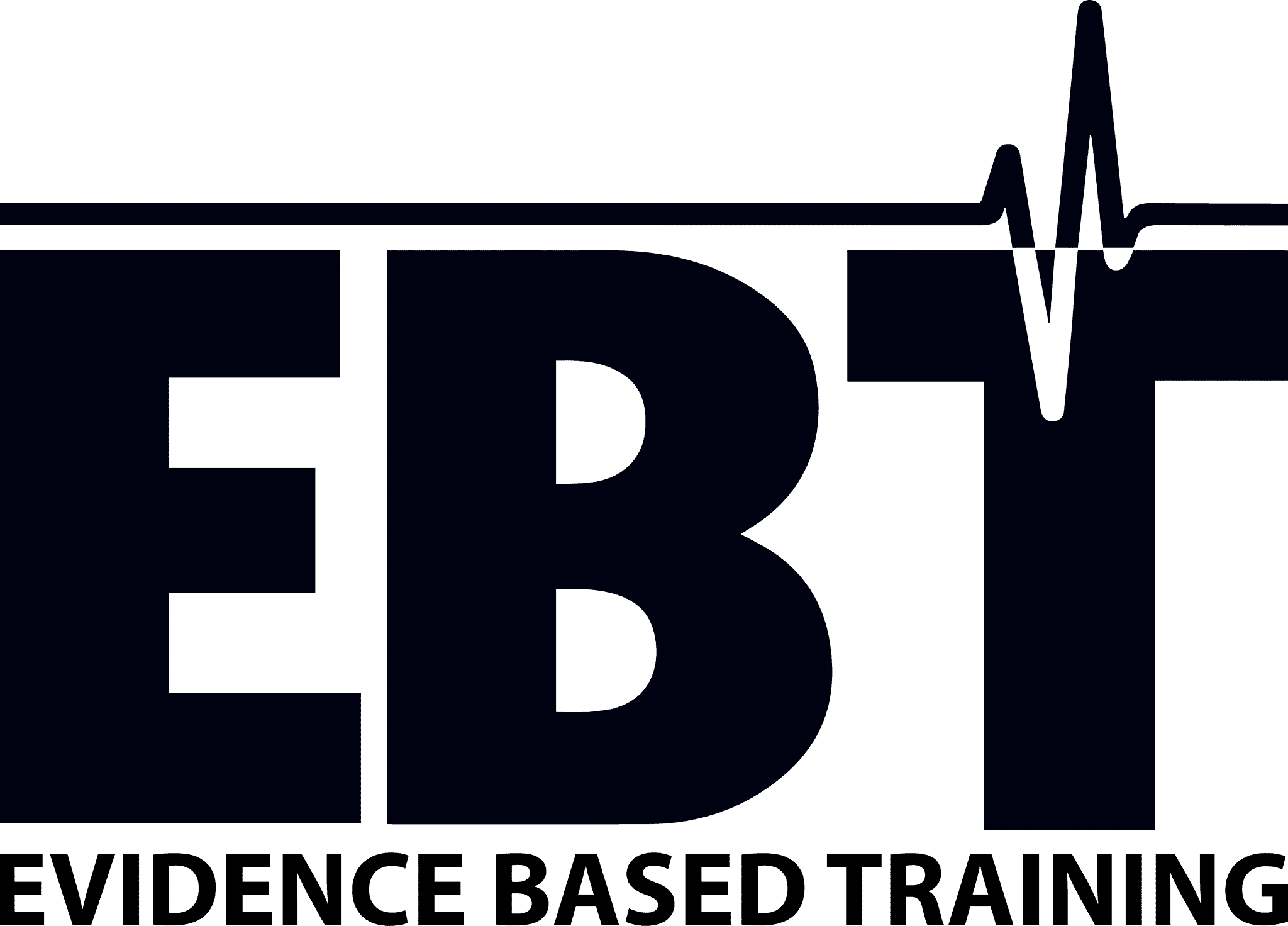I’ve set my fair share of goals in my life. Some went good, many went bad. I’ve gotten really pumped, only for the motivation to dwindle a couple of months later, ultimately finding the goals on my phone. Remembering, oh yeah I used to have those goals. If you’re like I used to be and you want to stop failing at goal setting you came to the right place. I’m a sports psychology consultant, have held multiple goal-setting sessions and today I’m going to teach you how to stop failing at goal setting.
What you’re in for:
- Learning the principles of goal setting.
- Learning why you should set goals, different types of goals, their pros and cons, things to think about when setting goals, how to divide into subgoals and how to evaluate.
- The text is about 3850 words and will take around 12-18 minutes to read.
Introduction to Goal Setting
A lot of you reading are already familiar with goal setting but have you thought about why you set them? Some of you might say because they’re good for performance, but have you ever thought about why that is? Goal setting influences many things that in turn improve performance. By setting goals you’re unifying your effort towards one or multiple targets. Think about it, you only have 24 hours a day and you can only recover from a certain amount of volume a day. While going to the gym with no direction, doing random exercises might give you a pretty good base on which to build. In most cases, that’s all you get and often, it’s less. By choosing a select few exercises or fields in which you want to improve, you will improve a lot more and a lot faster.
The Importance of Setting Goals
Goal setting also lets you identify what’s important. If you’ve taken the time to set a goal, it’s probably something that you find important or at least fun or interesting. When you start thinking about how much time it will take to achieve the goal and the logistics, you might realize that it’s not worth the time. That you didn’t want it as much as you thought you did. But, maybe, you think it’s worth the time but you don’t have enough time to achieve it. That realization can make you think about how you spend your time and how to manage it to make the goal achievable. Instead of looking at the phone 4 hours a day and being on social media all day (I’ve been guilty of this). You start spending that time (or at least some of that time) pursuing your goals and actually doing something meaningful.
The Core Principles of Goal Setting
Goal setting gives you a purpose. Say you’re going to the gym 3/w and you have no goals. It’s been a long day at work, you’re tired, you feel a bit weak. You know the gym is going to be super crowded and you don’t want to go. Why should you? The answer is, it doesn’t matter. It’s not going to have a big impact on your health and you don’t have any goals so why not skip a day? Take the same example but, this time you have goals. Why go to the gym? Because by doing so you’re one step closer to achieving your goals. The same principle applies to your tedious rehab routine or your boring diet. Sure they might still be tedious and boring. But, you see the purpose so you stop half-assing it and you keep doing it, even when it’s hard. In a study by Anessi results showed that goal setting increases adherence. By directing and unifying your effort, trying harder and being more persistent your performance will improve.
Different types of goals
As you might already know, all goals are not created equal but what’s the difference and why should you care? When setting goals you have to decide what kind of goal you want to set. When deciding, you should be aware of the different types of goals and their pros and cons. That knowledge will help you set the most fitting goal for the occasion. Let’s start with the goal that you’re probably most familiar with, Result-oriented goals.
Results-oriented goals are, as you may already have figured out goals about results. They are goals about your performance in relation to others.
Example: Coming first place or finishing top 10.
Pros: Can push you beyond where you might have gone, can be very motivating
Cons: Don’t take your performance into account, can hold you back, results are often at least partly out of your control, can be hard to measure, promotes focusing on others instead of self-improvement
Performance-oriented goals are goals about your performance in relation to yourself.
Example: Benching 250 pounds or running a 5k in 20 minutes.
Pros: In your control, promotes self-improvement, often easy to measure
Cons: Can lead to you taking it easy on yourself, some might find it unmotivating
Sub-goals are goals that are subordinate to your main goals.
Example: You want to squat 400 pounds a sub-goal could be going to the gym 4 times a week or learning how to brace properly.
Pros: Helps you know if you’re on track, can make achieving your goal easier, makes every session meaningful, increases motivation,
Cons: If done incorrectly they can divert focus from the goal, can be hard to know if they are important for the superordinate goal, need a superordinate goal
How to set goals
Now that you know why you should set goals and the different types of goals, it’s time to talk about how you set goals.
Like him or not. Dwayne Johnson is right about this part. When setting goals there are a couple of things that you should have in mind. One of them is knowing what it means to achieve them. Here are a couple of guidelines to follow.
Specificity in Goal Setting
First, they should be specific. This might seem like a no brainer but you’d be surprised how many goals are too unspecific. The benefit of being specific is that it gives you a clear path of how to accomplish the goal. It also makes it easier to know when you’ve succeeded and when you’ve failed. A goal like ”I want to get stronger in my lifts” might seem specific. But what lifts are we talking about and how are we defining stronger? Is it 1kg in every lift, is it a 20kg increase total? Be more specific! Set a goal like ”I want to increase my bench press 1rm with 10kg” you’ll have a much easier time knowing when you’ve succeeded.
Realism and Achievability
Secondly, goals should be realistic. If the goal is unachievable why even try? Sure you might be motivated to try hard the first week, maybe even the first month. After that, you’re going to realize that you’ve taken water over your head and your motivation will dwindle. Set a goal that you can achieve. That said, they should still be challenging. Research has shown that challenging goals are more motivating than unchallenging goalBut there’s an important caveat. Don’t overestimate your ability. Let’s say your room is a bit dirty and you want to make it cleaner. You set a goal to clean 10 minutes a day. That might not sound like much but when was the last time you cleaned? If the answer is more than 1 month ago, cleaning 10 minutes a day is quite a step up from baseline. Start out easy, set a goal like cleaning 20 minutes a week for 1 month. When you’re done, evaluate. If you think it went well, you can start thinking about increasing your cleaning time.
The Significance of Time-Bound Goals
Thirdly, they should be timebound. If you’ve taken the time to set a goal, it’s probably something that you care about or something that you want to achieve. If so, why take longer than you have to? By making a goal timebound you prevent yourself from slacking off. At the same time, you’re making sure that you will do it as soon as possible. It also makes it easier to know if you’ve succeeded or failed. By not setting a deadline, you could be pushing for the goal forever while telling yourself, next year I’ll get it. Maybe there’s a reason why you keep failing. There might be something that’s holding back, keeping you from achieving the goal. By making it timebound you avoid that. It also gives you a set time to evaluate. By evaluating you can become aware of what’s keeping you from achieving the goals. You also identify what helped you. But more on that later.
Thoughtful Consideration of Goals
Fourthly the goal should be thought-through. Do you have the resources to make it happen, is it relevant for what you want? Those are questions that you need to ask yourself when setting goals. But what does that mean? To make it more concrete, do you have the time, money, equipment and will to achieve your goal? If it’s relevant can be trickier to answer and harder to know. Start by thinking about why you’re setting the goal. When you’ve identified that, think about if the goal will help you with that. I know it’s still a bit fuzzy. Let me give you an example. Say you want to increase your bench and you want to set a goal that will help your bench. Stability is important when benching but is a bozu-ball bench press or banded kettlebell bench press going to improve your bench press? Sure it might improve your stability but do you need that much stability to bench press? Probably not. You could have spent that time getting better at benching or trying to improve your leg drive.
Enhancing Goal Achievement
Okay, now you know the basics of goal setting. But, there are a couple of other things that you should have in mind when setting goals.
Maintaining Focus on Your Goals
- Keep yourself reminded of the goal. This might seem weird but when you set multiple goals and some of them are long term, it’s easy to forget about them. By putting a note on the fridge, circling your calendar or changing your screensaver, you avoid forgetting your goals. At the same time, you’re keeping your motivation high.
Accountability and Motivation
- Think about holding yourself accountable. You can do this in many ways, by telling your friends, posting on social media, entering a competition and so on. By holding yourself accountable, failing will become more uncomfortable. This can lead to you trying harder. That said it’s not a must. If you don’t want to tell anybody or enter a competition that’s fine, but it’s something to keep in mind.
The Power of Rewards
- Reward yourself. If you’ve tried hard and given it your all or done something that you normally haven’t, why not celebrate? If you know you’re working for that new video game, that doughnut or those new sleeves it might make you try a bit harder. It doesn’t have to be something big. Make sure that the reward isn’t counter-intuitive. If you’ve lost 1 pound you probably shouldn’t celebrate with 4500kcal worth of pizza. If that’s how you roll that’s fine but at least think about it. That said the main motivation for completing goals should be your personal improvement. Internal motivation is of higher quality than external motivation and tends to be more sustainable. A reward can help get you on the way and start getting you motivated about improvement so it’s a usable tool.
Diversity in Goal Types
- Set every type of goal. Set sub-goals, performance goals, result goals and process goals. This has been shown to be the best for motivation. Just take it easy in the beginning. It’s easy to go balls to the wall and set too many goals. Best case it’s a sub-optimal way of setting goals. Worst case, you will fail. Start with a couple of goals about the same thing. If that works well, you can start thinking about adding goals.
Spot the right one
Here are some examples of bad goals and better goals. Try to spot the difference and try to fix them yourself.
I want to become stronger / I want to increase my bench press 1rm with 10kg in 7 months
I want to grow my arms / I want to add 2 inches to my arms in 6 months
I want to win a competition / I want to win x competition
I want to increase my bench / x
I want to run 10k fast / x
Creating an action plan
Okay, by now you’ve figured out what you want to do and you’ve set a goal. But you’re not done yet. It’s important to create a goal achievement strategy. Let’s say you set a goal to squat 200kg. Now what? Just setting the goal isn’t enough. You must have a way to achieve it. It can be a bit tricky, but I’m going to give you some pointers, so you should at least be able to create a decent strategy.
Developing an action plan
1. Creating a goal achievement strategy
The goal achievement strategy is an integral part of most action plans since it is the way in which you achieve the goal. It is the how, what and when in goal achievement. Let’s say you want to lose 10kg in a year. A goal achievement strategy could be learning low-calorie recipes or eating vegetables 2 times a day. If you want to increase your bench, a goal achievement strategy could be learning how to use leg drive, or improving your military press strength. All strategies should be specific to the goal in mind and should focus on identifying the different factors that will lead you to goal achievement. Sometimes all you got to do is train the movement, other times you have to throw in supplementary items in order to achieve the goal. If you have a deadlift goal and your deadlift has been steadily progressing, there’s not much point in throwing in extra exercises or routines. If you haven’t been steadily progressing or have some issues creeping up like grip strength is starting to give out, or back pain starting to increase, it’s a good idea to include something in your strategy to combat these issues.
2. Dividing into sub-goals
Divide your goals into sub-goals. By splitting longer goals into sub-goals you make the path to success a lot clearer. You’re also making sure that your motivation is on top. A similar thing about unrealistic goals is true for long term goals. It’s easy to get motivated by the goal in the short term but it’s easy to lose track of it. Before you know it one year has gone by and now it’s too late to start taking the training seriously. By splitting your goal into sub-goals you know where you should be each month, week and even session (if you decide to split it that far). This suddenly makes every session important and makes sure that you’ll try your best every time. There are different ways of setting sub-goals of varying difficulty. The easiest way is dividing. Say you want to deadlift 400, 400/2=200, 200/2=100 and so on. You can also do it in a nonlinear fashion. Say you want to lose 12kg in a year. You can either do it linearly by losing 1kg a month or you can do it non linearly by losing 2kg, 2kg, 2kg, 1,5kg, 1,5kg, 0,0kg, 1kg, 0,6kg, 0,5kg, 0,4kg, 0,4kg, 0,1kg. If you feel like it’s going to be easier in the beginning, you can choose to lose more in the beginning. In doing so you’re setting yourself up for some easier months in the end. Now that you know how to divide it’s time for the not so straightforward approach of setting subgoals. Goal-related goals.
Goal-related goals are goals that will help you in achieving your goal but that’s not the same movement, skill, exercise as the main goal. Goal-related goals are easily combined with the goal achievement strategies. Let’s take the previous example of wanting to lose 10kg in a year. A sub-goal could be learning 3 low-calorie recipes or eating vegetables 2 times a day. By simply making your goal achievement strategies into goals, you’ve created goal-related goals. The goal-related goals can be a bit tricky because they can be hard to specify. For example, when do you know that you’ve learned how to leg drive or brace? Since skills like improving leg drive and bracing can be beneficial to the main goal, even though they’re vague, they’re still relevant goals. The rule still applies though, be as specific as possible. If you’re still unsure about how to set goal-related goals, think about things that could help you in your pursuit. Try to think outside the box. Think it through and make sure it is of use and will help you in your pursuit. Otherwise, it’s just time that you could spend on the main goal. The next step is evaluation.
3. Identifying barrier and how to combat them
Barriers are common when attempting to achieve a goal. You should identify try to identify these barriers and how to combat them. Okay, but how? You start by thinking about what could get in your way. Will it be hard to balance the goal with work, or family? Have you lost motivation in the past and is this a possible threat to your goal? Do you have injuries that could stand in your way? Different methods are most suitable to combat each specific barrier. Since they are so specific and individual there’s no point in me listing different ways you can combat them. It’s up to you to find a way that will work the best for you.
4. Evaluating
Evaluating is an important part of achieving your goal and should be done periodically. Evaluating let’s you identify how it’s going, if something keeps you from achieving the goal and much more. In my experience, this is a part that’s often neglected, which I’m guilty of myself. By deciding dates, on which you evaluate, you decrease the risk of you neglecting it. This might seem annoying and not-important (it’s really not and I’m going to tell you why later) but it doesn’t have to be this big thing. Evaluating at least 1-2 times and one time after the goal is done 5 minutes each is going to help you more than not doing it. Ditch the all or nothing approach, set some dates and do as much evaluating as you like. Okay, I’m going to evaluate, but I don’t really know how to. For some it’s easy but for many, it’s the most difficult stage so it’s worthwhile discussing.
When evaluating you should think about
- If you’re finding the journey enjoyable or not (why?)
- If you’re succeeding or failing (why?)
- If it’s going the way you thought (why?)
- what‘s helping and hindering you (why?),
- can you do anything better, (if so what and why aren’t you doing it?)
- what are you gaining from the journey?
Go deep. The purpose is to outline clear factors that influence your goal. Don’t stop at the first answer. For example, let’s say you’re trying to lose weight and you’re doing an evaluation two months in.
I don’t find losing weight enjoyable because I can’t eat what I want.
A lot of you would have stopped here but why is not eating what you want a big deal. Why does it matter? Same example but going deeper.
I don’t find losing weight enjoyable because I can’t eat what I want, which makes me feel controlled. It’s changing my perspective about food. It occupies my mind a lot more than it used to which is taking my focus and time of things that are more important to me.
When you’ve outlined the problem and the reason behind it or something that helps. Think about how to solve it or how to incorporate it more. This might seem like a lot, but as I’ve demonstrated they are important questions and the answers will help you succeed and help you when setting goals in the future.
Adapting
Okay it’s going worse than you expected and you’re not going to be able to achieve the goal. Maybe it’s going better than you thought and you’ve already achieved it. Don’t sweat it, this is where adaptation comes into place. If the goal’s no longer realistic, make it easier. Change your squat goal from 400 pounds to 350. That said it should still be challenging. If you end up failing in the end anyways that’s fine, just evaluate and try to identify what happened. If the goal is too easy, make it harder. These scenarios are the easy ones and sometimes you have to be more creative. Let’s say you get injured midway. Set a goal about something similar. Can’t back squat anymore? Set a front squat goal or a leg press goal etc. Make sure you hink it through to see if it’s still worthwhile (like I discussed in the thought through section). While adapting seems useful it’s kind of like Pandora’s box. If you change it once you might change it again. It can become an easy out and a way for you to achieve your goal without trying. Change the goal only after evaluating and if it’s completely necessary.
Summary
By now you should know the basics of goal setting and some more advanced stuff. If you’re still having a hard time with some of the parts you can watch my video on goal setting, or mail me. I’m available as a consultant and you can find me on Instagram.
Takeaway points
. Set goals to improve motivation and performance
. Set goals that are specific, realistic, timebound and thought through
. Use every type of goal
. Develop an action plan
. Set new goals
Article written by Joar Svensson
2. Anessi (2002)
8. Vallerand, R (2000)








